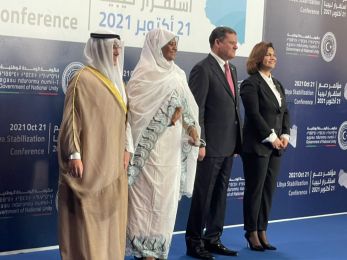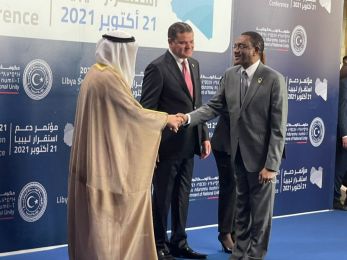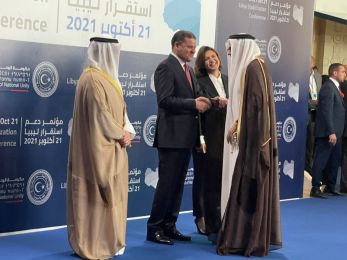‘I am a scientist’: How after-school clubs can help build the next generation of female scientists in Sub-Saharan Africa: World Bank Blog By Christiane Voufo
Dar es Salaam, Tanzania (PANA) - Failure to educate girls costs approximately $15 to $30 trillion in lifetime earnings for 12 years of missed education. However, the solution is not simply to get more girls into schools.
Equally important is getting more girls into science, technology, engineering, and mathematics (STEM) fields, where opportunities for higher earnings are more important.
In high-income countries, STEM graduates with a bachelor’s degree earn 47% more than their non-STEM counterparts with the same level of education, and 60% more than those without a bachelor’s degree in non-STEM fields.
This is especially important in Sub-Saharan Africa, a region where 89% of employed women work in the informal sector, and approximately 50 million girls remain out of school.
Despite these statistics, the growing demand for STEM skills provides an avenue for African women into the fourth industrial revolution, particularly in sectors like the information and communication technologies sector, which was expected to grow to $104.2 billion in 2023 from $95.4 billion in 2020.
Getting more women into Africa’s digital economy will require investing more into STEM education in the early years. This is especially important given the regional disparities in STEM education and performance, with mathematics scores revealing alarming differences.
For instance, in countries like Burundi, Uganda, the DRC, and Cameroon, the average learning achievement in mathematics for girls at the end of primary school stands at 27%. This means that only 27% of girls who participated in standardised mathematics assessments passed. This stands in contrast with Malaysia and Singapore, which reported an 85% and 99% learning achievement, respectively.
Furthermore, in Burkina Faso, only 20.6% of girls graduated college with an engineering degree, and only 11.6% are represented in the engineering and technology field.
Fostering a STEM identity
Where formal education falls short, informal education may provide an avenue for success by providing STEM subjects in a non-intimidating context. This is especially important for fostering a STEM identity, which refers to one’s ability to see themselves as a scientist.
A STEM identity includes three pillars: (a) understanding of STEM subjects (i.e., competence); (b) active engagement with STEM concepts and materials; and (c) recognition by oneself and others as a STEM individual.
Developing a STEM identity starts early, especially during elementary school, when students are beginning to develop their career aspirations. This makes the development of programmes that target primary and lower secondary schools crucial for developing a STEM identity.
The importance of early exposure and afterschool clubs
Studies have marked adolescence as a critical period when the brain’s development in cognitive, social, and emotional functions are highly active, suggesting an importance for developing one’s self-identify. Additional research has shown that exposure to STEM-related extracurricular activities during elementary and lower secondary school helps develop a STEM identity.
While formal STEM education is important, informal STEM education — provided by museums, zoos, science camps and clubs – plays a crucial role in promoting a deeper understanding and appreciation for STEM in young learners.
Growing evidence suggests that afterschool clubs and programmes, delivering educational content through games, projects, field trips and other engaging activities outside of regular school hours, can play a key role in developing STEM identities.
In the United States, an evaluation of 160 after-school STEM programmes involving 1,600 participating students found significant benefits: 73% of participants reported an increased science identity, 78% showed increased interest in STEM, and 80% gained increased knowledge of STEM careers.
Similarly, in Israel, clubs like Mind the Gap! provide girls access to tech companies like Google, tech conferences, and women pursuing tech careers, encouraging more girls to study computer science in high school. Efforts across Sub-Saharan Africa aim to replicate similar successes.
Understanding the characteristics of good after-school clubs in Sub-Saharan Africa
Although data on the impact of afterschool STEM programmes in Sub-Saharan Africa is limited, several initiatives demonstrate promise to support the development of girls’ STEM identities:
The Working to Advance Science and Technology Education for African Women (WAAW) Foundation, since 2007, has worked to empower African women and girls in STEM. It aims to increase STEM participation by 10% and create 10,000 jobs through female innovation across 20 countries by 2025. The organisation has supported 54 STEM outreach chapters, reaching over 38,000 secondary school girls, and provided scholarships for female college students pursuing STEM degrees, and STEM kits (i.e. 3D printer, Arduino starter kits, solar panels, snap circuits, and more) to public secondary schools.
In East Africa, the Asante Africa Foundation (AAF) has supported 478 schools and communities in Uganda, Kenya, and Tanzania since 2007, focusing on digital literacy and apprenticeship programmes, and improving secondary transition rates for rural children.
AAF’s impact report for 2022 reveals significant achievements: a 72% graduation rate from its digital literacy programme, successful provision of technical support to 86% of partner schools for improving digital curriculum, a 10% increase in mathematics test scores, and a 13% increase in digital literacy levels. These outcomes highlight the programme’s significant impact on improving STEM education especially in rural areas.
The success of these initiatives can be attributed to three important characteristics: (a) holistic approach to STEM education: these programmes create a supportive environment that encourages more girls to study STEM fields and increase the pipeline; (b) goal-driven design: they tailor interventions to the specific needs of the youth and their communities; and (c) targeted interventions: they concentrate efforts on primary and secondary education stages with specific interventions to develop a strong STEM identify among young learners.
Despite these successes, the limited evidence on the impact of these programmes in Sub-Saharan Africa underscores the urgent need for a comprehensive framework that will establish clear goals and metrics for formal assessment.
-0- PANA AR/MA 12Feb2024






